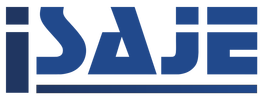Abstract: The aim of this study is to determine the experiences of students with high levels of digital addiction in their application of digital detox processes to reduce or overcome their addiction. The Digital Addiction Scale for University Students, developed by Kesici and Tunç (2018), was applied to 152 students participating in the study, and interviews were conducted with 49 students who had high/very high levels of digital addiction. Based on volunteered participation, 10 students were included in the digital detox program. Data were collected using a semi-structured interview form and analyzed using content analysis. It has been observed that students express that overcoming digital addiction with beneficial activities is a challenging yet highly useful experience. Students have stated that the easiest applications for them during the digital detox process are not watching anything while eating, picking up a hobby, and using a wristwatch, while the most challenging applications are turning off notifications for mobile applications and leaving the phone in another room while going to bed. Furthermore, it has been observed that while some students describe reading books as an easy application in the digital detox, others express that they face difficulties in implementing this application.
Cite this article as: Çakmak Karapinar, D., Daş, A., & Daş, N. (2024). Digital detox experiences of generation Z. Addicta: The Turkish Journal on Addictions, 11(2), 208-216.

.png)
_page-0001.jpg)
.png)
.png)
